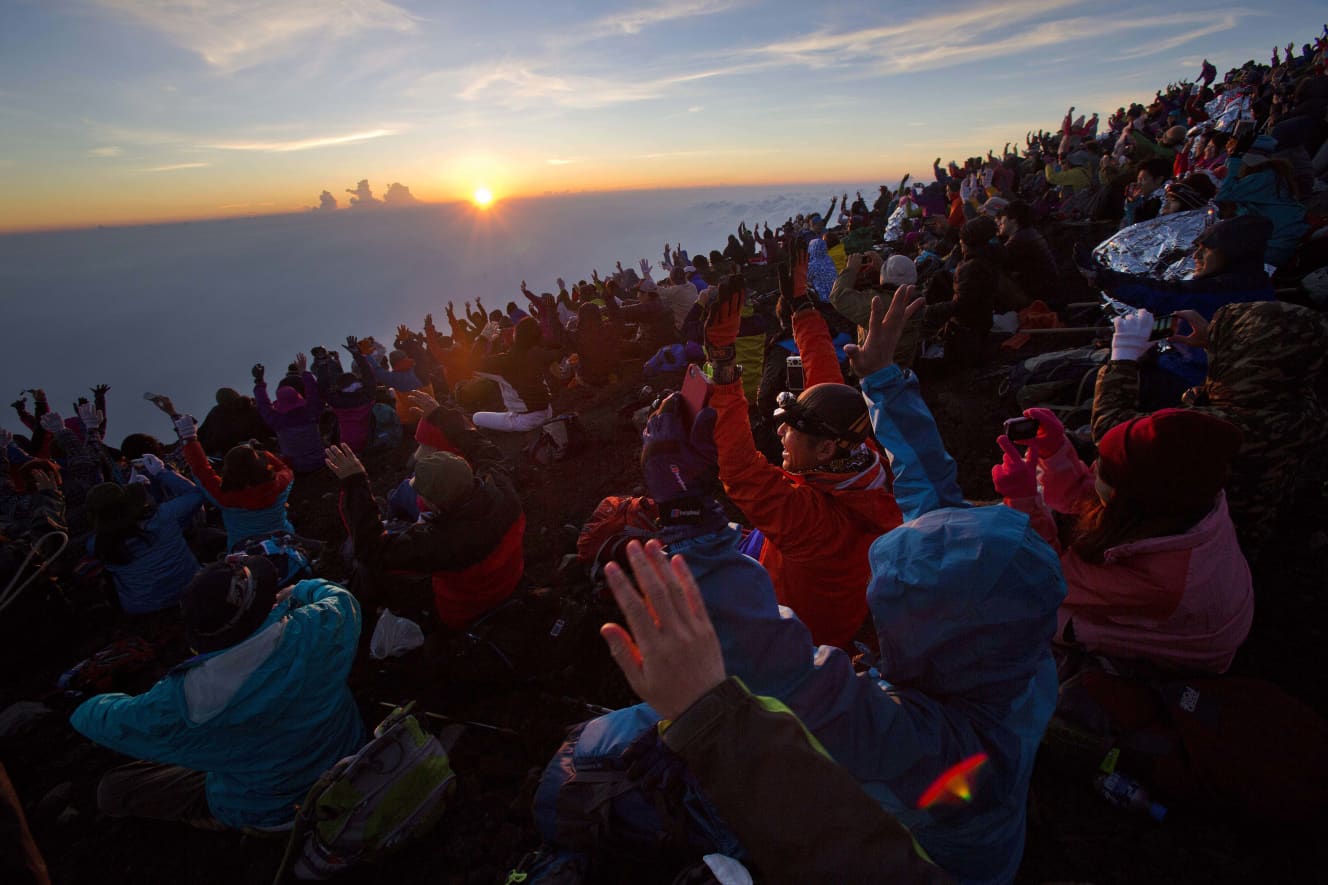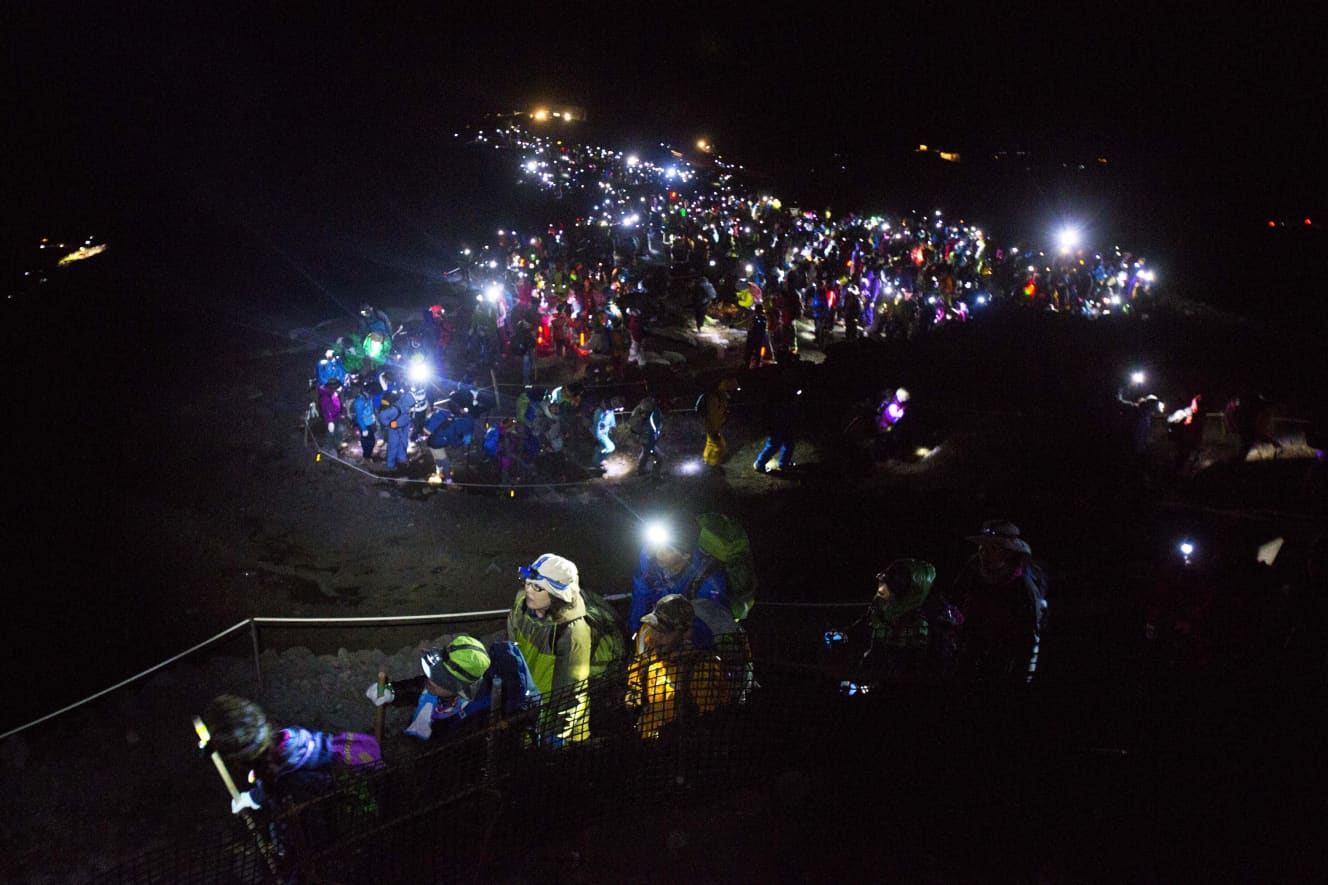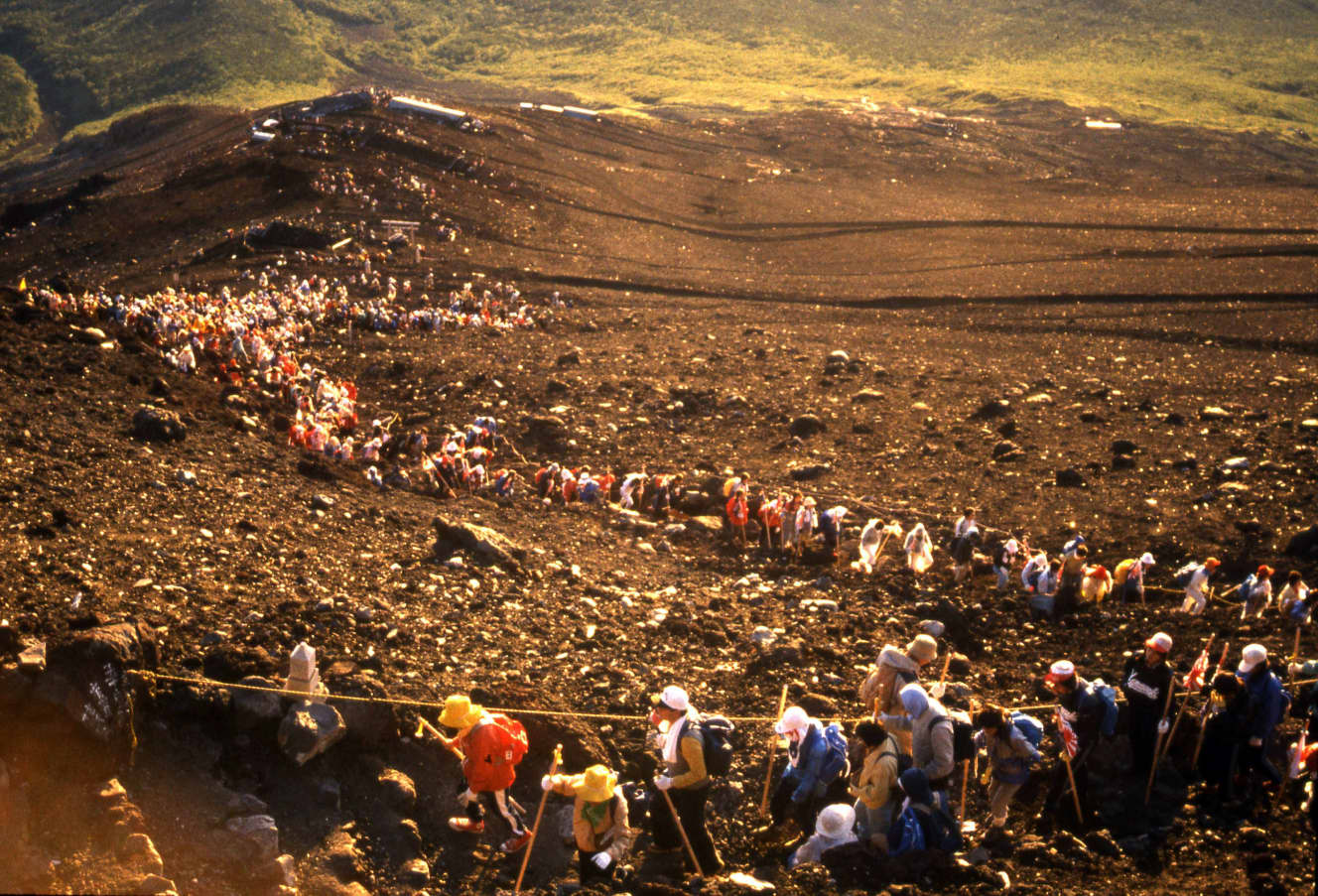Fuji will be in shambles… If things continue as they are, there will be more accidents and Mt. Fuji climbing guide warns
This year, the number of climbers is expected to be the highest in history…and there is even an “unscrupulous” cheap tour where a single person guides 40 climbers.
It has been about a month and a half since the opening of Mt. Fuji opened to the public, it was reported that men and women of all ages and genders were climbing the mountain with great joy.
Fuji is in a mess. If things continue as they are, it would be no surprise if a major accident were to occur at any time.
Mr. A, who has been guiding climbers up Mt. With the Corona under control, the number of climbers has exploded this year, and as of early August, the number of climbers was close to 100,000.
The mountain lodges are packed even on weekdays. The problem of “bullet climbs,” in which climbers walk down the mountain for two days and zero nights without staying at a lodge, has become an issue, but it seems that this is due in part to the fact that climbers cannot stay at lodges.
In the past, not so many people climbed the mountain. However, the number of climbers has been increasing visibly since the mountain was registered as a World Heritage site.

Fuji was registered as a World Heritage site in 2001. Fuji was registered as a World Heritage site in 2001. Indeed, the number of climbers, which had been around 200,000 until then, began to exceed 300,000 around 2010,
This year will probably see the highest number of climbers in history.
Fuji’s popularity has led to many tours being organized.
Some of the tours have their own problems. In many foreign climbing tours, the number of people a guide is in charge of is set, but in Japan there is no such rule. In Japan, however, there is no such rule. However, some tours that claim to be “inexpensive” have one guide in charge of 40 people. This makes it difficult to believe that they can properly respond to any problems that may arise.
In one case, a tour guide returned a guest who was unable to walk to the top of the mountain from the ninth station alone.
Ninety-nine percent of mountain accidents happen on the way down. I can’t believe they would do such a thing.
Mr. A’s anger is unrelenting.
Fuji, most climbers start at the fifth station, which is closed to private cars in July and August, so they take permitted buses and other vehicles, some of which are not licensed as tour operators, he said. Some tour operators are not authorized to offer such tours, and even though they are trying to make the climb safely, the tour may end up being dangerous.
If a tour operator is authorized, it must have a registration number, such as ‘ Registered Travel Agency No. ○○○○. ‘ Tours and buses without this number are not authorized to operate. It is important not to use tours or buses that do not have this number, and to confirm the number of people on the tour before applying.

Restrictions” and “Entry Fees”… Complicated concessions and management structures make it difficult to solve the problem.
The current state of the mountain is not good for climbers or the mountain, according to guide A. “Many climbers look forward to seeing the sunrise on the summit,” he says.
Many climbers look forward to seeing the sunrise at the summit, but thanks to this, the 1-km distance to the summit is jammed. But because of this, there is a traffic jam on the 1 km road to the summit, and they cannot go any further. If there is a falling rock, there is no way to avoid it. The sunrise is beautiful no matter where you see it, even if it is not at the summit. I don’t think it is necessary to be particular about seeing the sunrise at the summit.

The mountain trails are also becoming rougher and rougher as more people visit.
The rain has been particularly heavy recently. Normally, when it rains, it permeates the ground, but recently it rains more than it permeates, so sometimes the trail becomes like a river. Lots of rocks roll down, too, and it’s really dangerous.”
If that is the case, I think we should maintain the trail, but climbers are coming in incessantly, so we don’t have time to do so.
I think it is necessary to regulate entry to the mountain. I would like them to charge an entrance fee, and at any rate, they should maintain the mountain trails. In other countries, it is common to restrict entry to the mountain and charge an entrance fee. In Taiwan, they have a lottery system. Regulations are necessary to make the mountain a good place to climb.
Currently, we are asking for a donation of 1,000 yen in the form of a “cooperation fee,” but it is not mandatory. Nowadays, when fireworks viewing is also charged, it would be good to charge a fee to enter the mountain.
Fuji is very difficult to manage because of the intricate administrative relationships.
Fuji, a World Heritage site, is managed by the Ministry of the Environment; the area from the 8th station up is under the jurisdiction of the Sengen Shrine, which has a shrine at the summit; the trail to the 8th station is managed by the Yamanashi Prefectural Public Works Department on the Yamanashi side and the Shizuoka Prefectural Public Works Department on the Shizuoka side; the area around the 5th station is under the jurisdiction of Fujiyoshida City in Yamanashi Prefecture and Fujinomiya City in Shizuoka Prefecture.
I don’t even know what to say to them anymore,” he said. If they charged at least 3,000 yen to enter the mountain, they would be able to maintain the trails and reduce the number of climbers.
Moving a single rock is no good”…Is it good that the site was registered as a World Heritage site?
The fact that the mountain has been inscribed as a World Heritage site has also become a bottleneck in environmental improvement.
Anyway, they say you can’t move a single rock. They use ropes to hold the big rocks in place, as if they are about to roll down. Why don’t you just break those things up?”
Is it the Ministry of the Environment that is making Mt.
They don’t even allow us to build more huts. Some foreign mountains charge tens of thousands of yen for entry, but the lodges are like hotels and the food is excellent. Fuji should be the same way.
Yarigatake and Mt. Tsurugidake are mountains that require technique to climb, and you can get lost on the way. Compared to such mountains, climbing Mt. Fuji is not so much a “mountain climb” as it is a “sightseeing trip.
If the weather conditions are good, it is easy to climb the mountain, but if the conditions are bad, fatal accidents can occur. Nowadays, people can rent shoes and backpacks, and anyone can come easily, but I want people to be aware that it is a dangerous place.
On August 11, the Yamanashi Prefectural Government announced that it would implement regulations in cooperation with the Yamanashi Prefectural Police if the danger of falling rocks or tumbles increases above the fifth station of the Yoshida Route, a mountain trail on the prefectural side of the mountain. Rather, accidents involving falling rocks and falls have already occurred.
The government is aiming to become a tourism-oriented country and seems to be happy to see an increase in the number of tourists, but if the situation continues as is, there is no telling when accidents will occur. I think it is necessary to establish proper rules and create an environment before something like the Shiretoko sightseeing boat accident occurs.

Reporting and writing: Izumi Nakagawa PHOTO: Afro